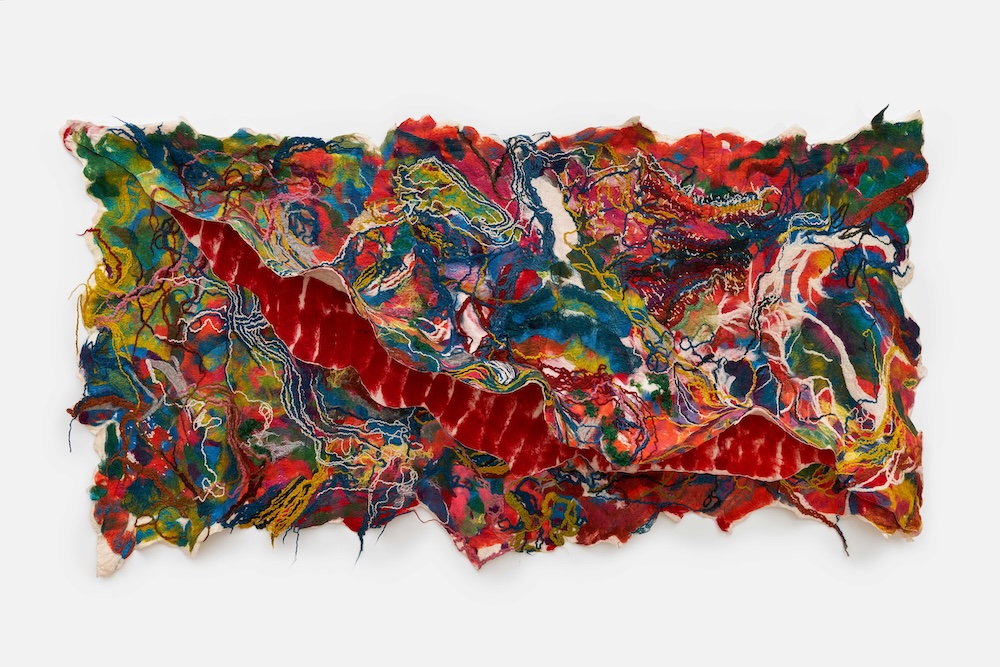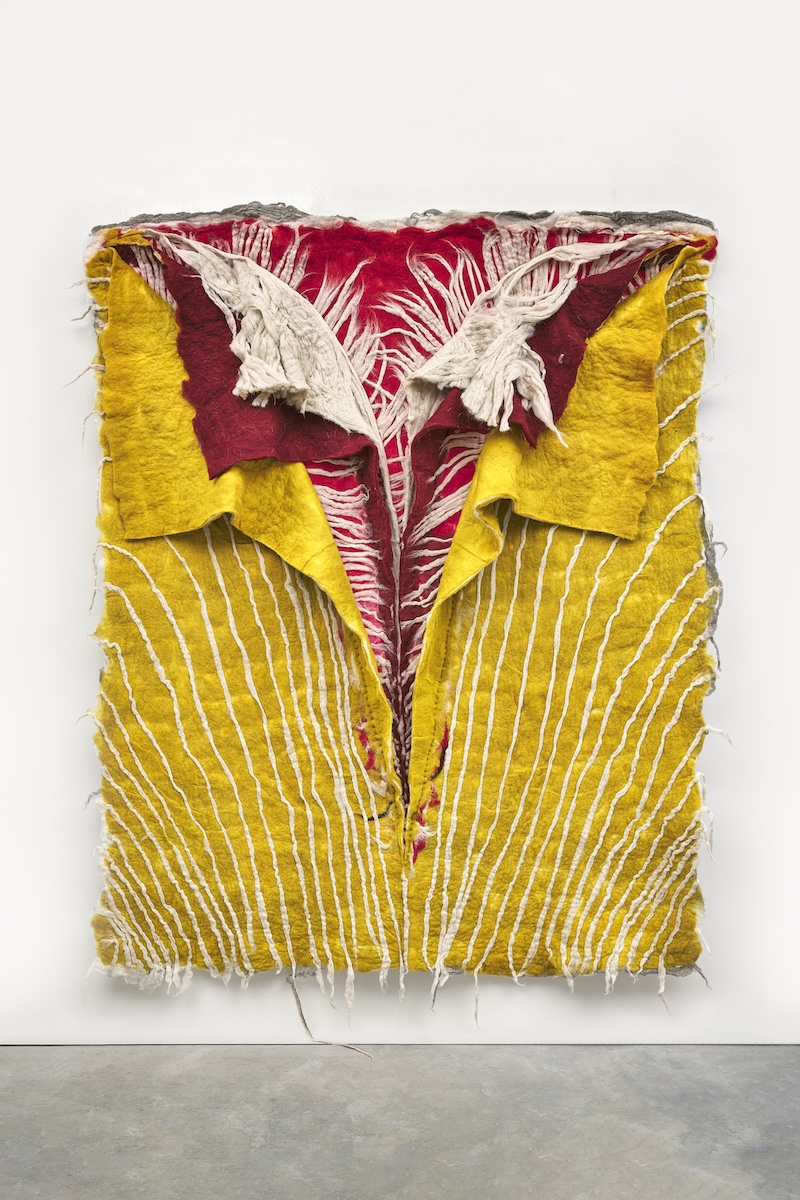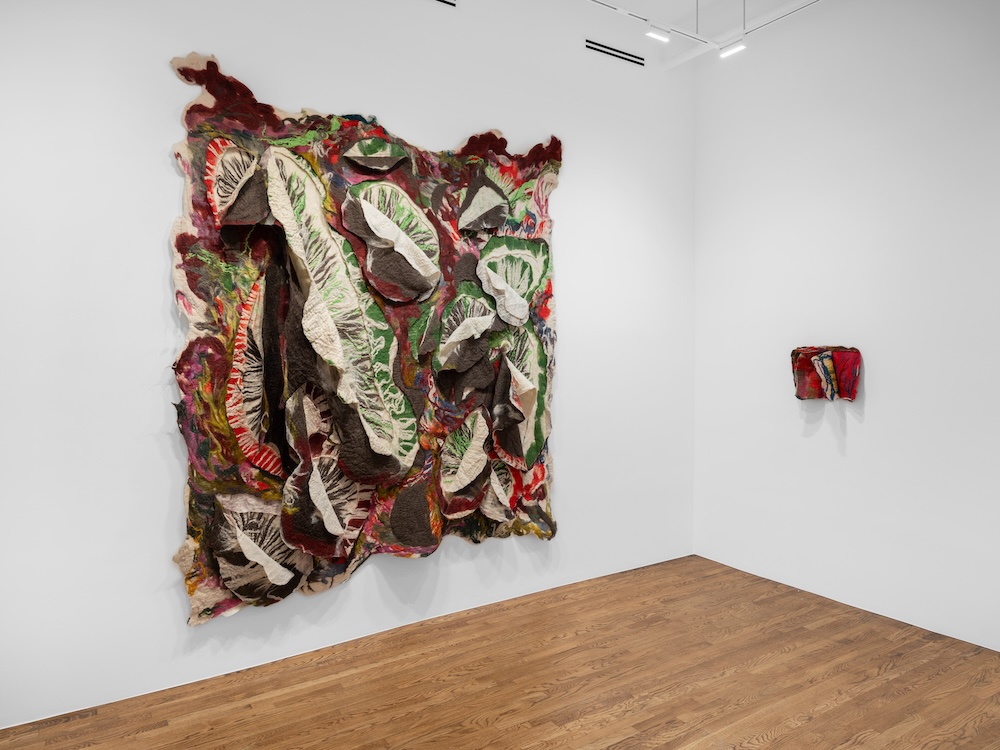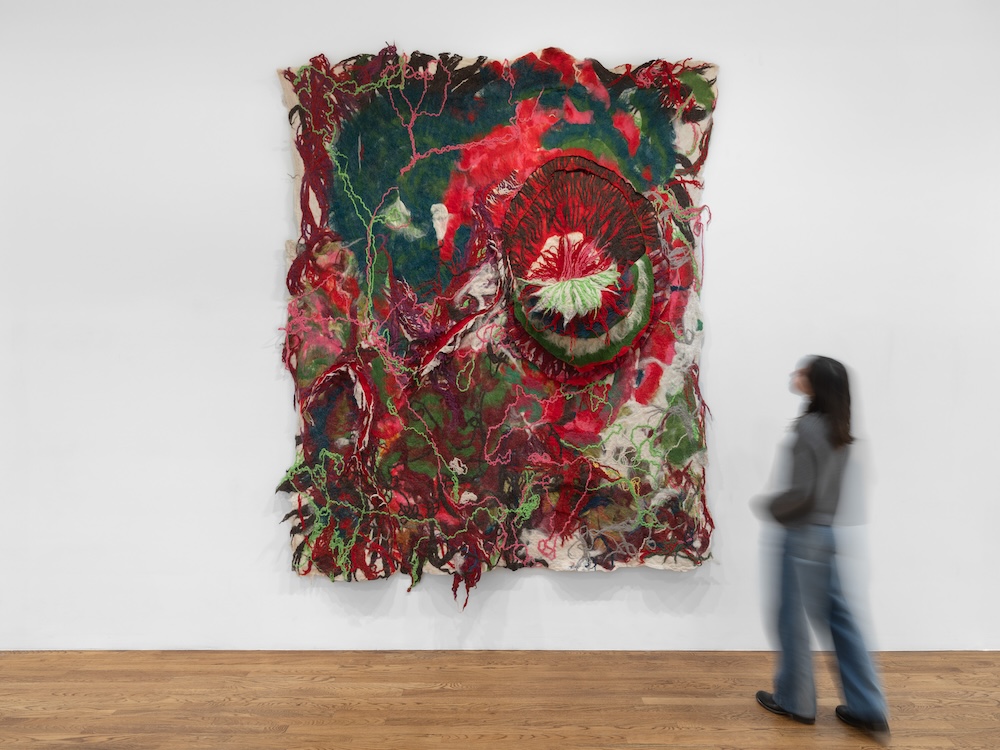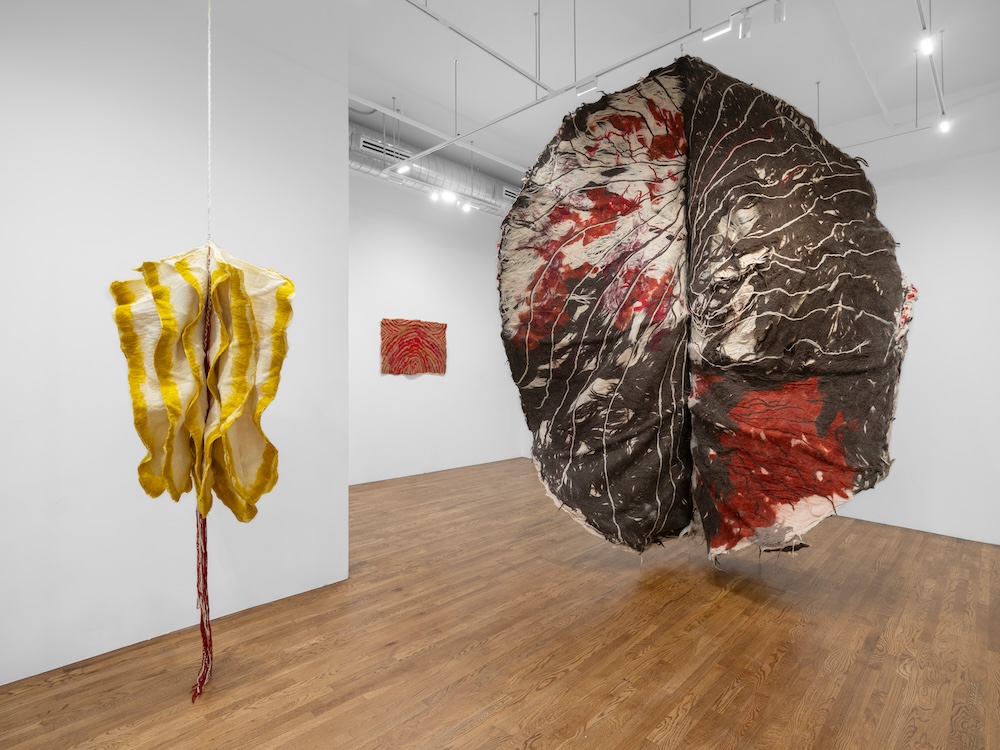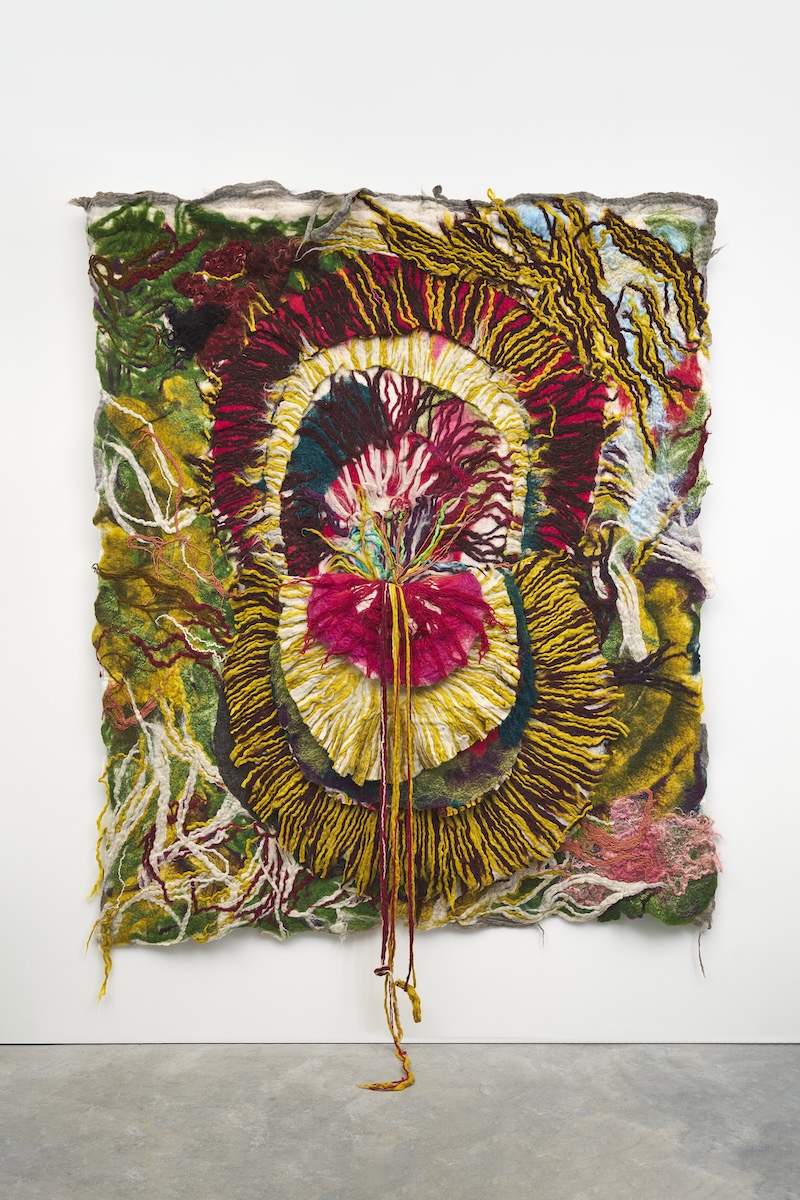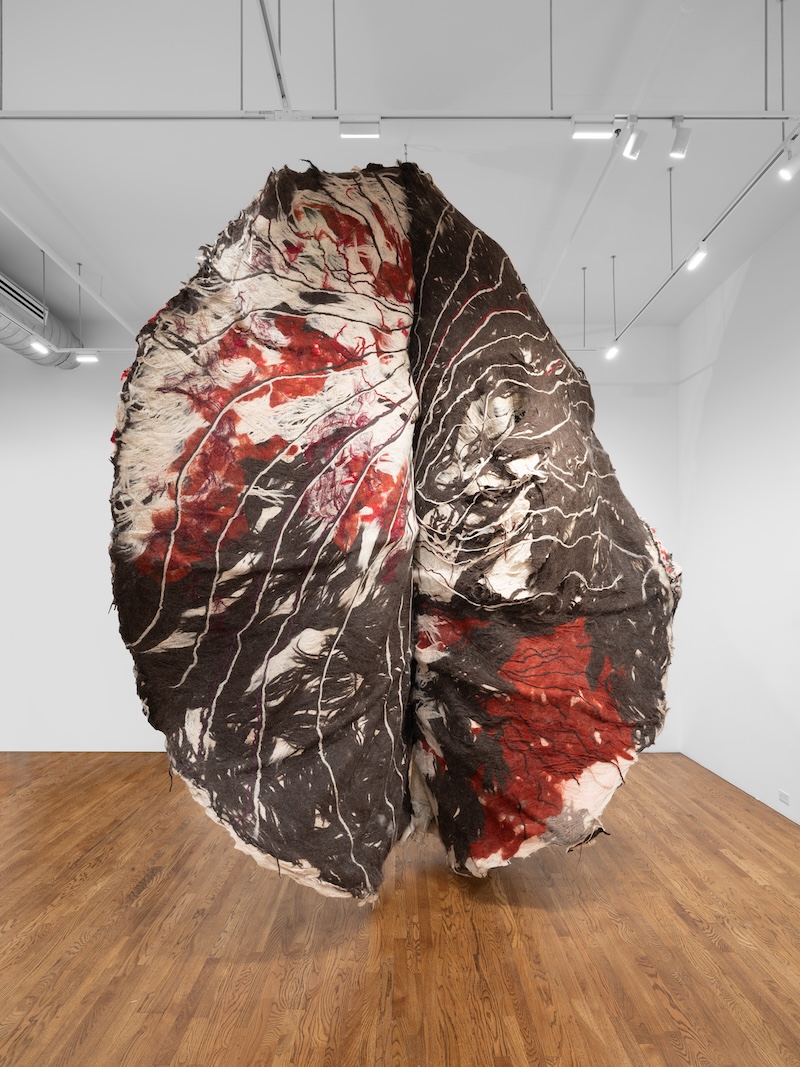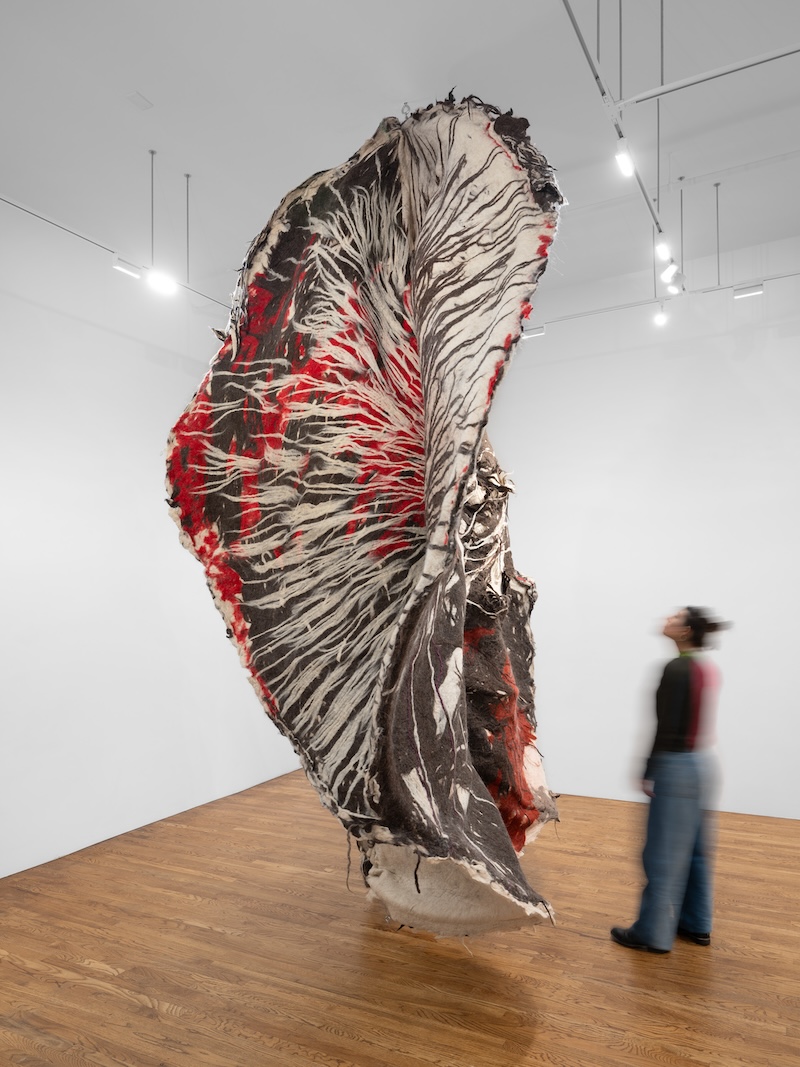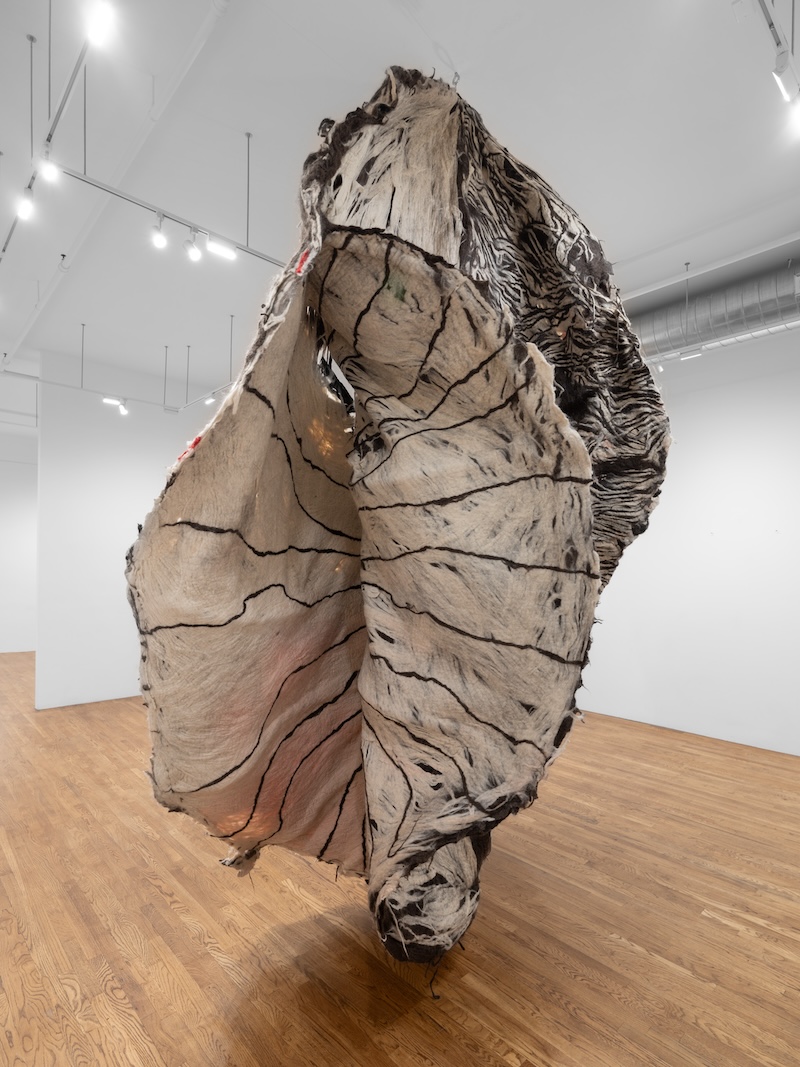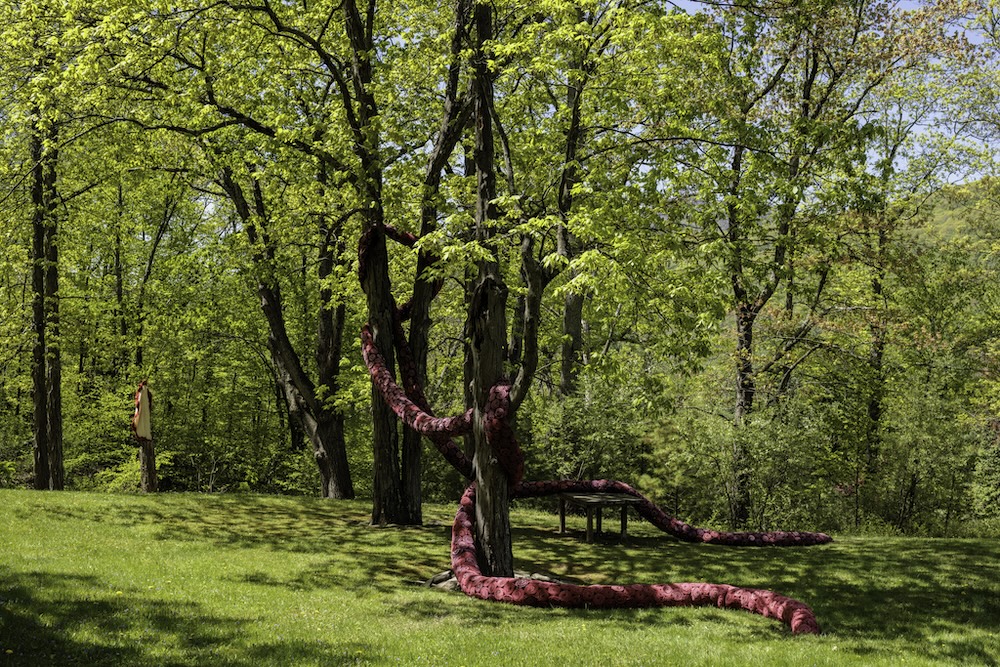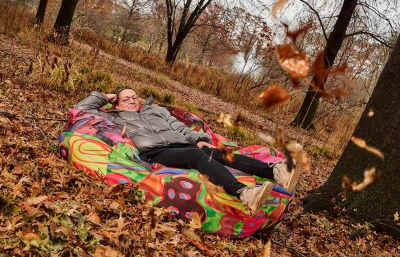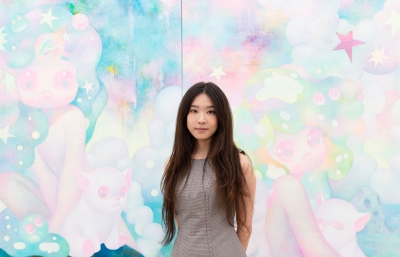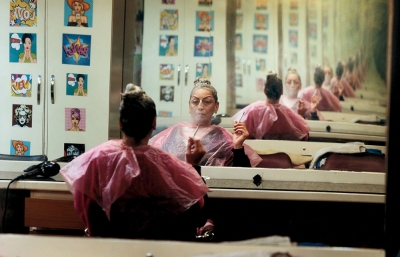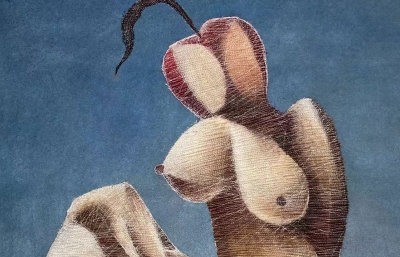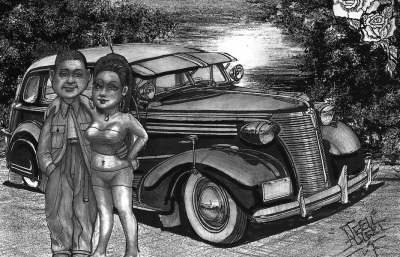Occasionally, art defies definition and can be described in myriad ways, stretching a medium’s limits and carrying its history while transforming into something singular. Sagarika Sundaram innovates with fiber, molding it to heights and shapes previously unrealized, absorbing influence from all genres of art. You’ll want to put your hands on the work, but it might touch you first.
Kristin Farr: How do the forms and materials of your work relate to the body?
Sagarika Sundaram: The fabric is fleshy, often cut open like a membrane, a wound folded open, revealing a form hidden within a form. I’m interested in the psychological tension between inside and outside, surface and structure. Concentric rings, spirals, and a hybrid flower-womb-maw recur as abstract gestures, recalling botany but also human biology, offering multivalent interpretations around birth, growth and nonlinear notions of time. At the heart of my work is an attention to the creative principle.
When did you start working in fiber? Tell us about your materials and dyeing process.
I studied batik, wax painting on cloth, in India between the ages of 11 and 18. The handwriting I uncovered during this period carries through in the abstract constructions I currently create. I acquire fiber primarily from the lower Himalayan region, Upstate New York and Oaxaca. My network of wool suppliers is constantly shifting and expanding. Each variety of wool has its own texture, which offers a unique character to the work.
I hand-dye the fiber, drawing from a deep understanding of the physics of fiber and the chemistry of color. I lay wool down like I’m sketching—cross-hatching and overlapping strands to form a mesh, a strong, connected membrane. The fiber is then diffused with warm, soapy water and then rolled back and forth until it enmeshes into a cloth. 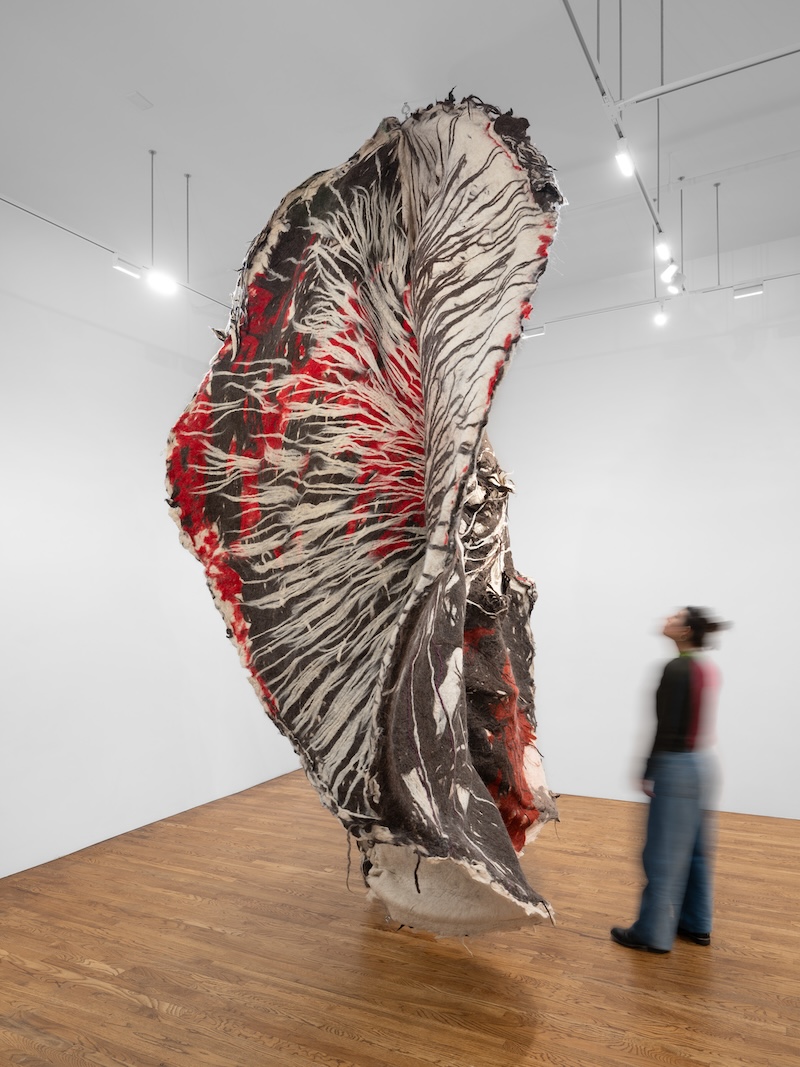
Talk about the cultural and historic significance of felt and how that resonates for you.
One of the things that I’m always so drawn to with textile culture is that it’s a shared medium, almost universally, around the world. Across Central Asia, the Silk Road, China, Turkey, India, and Iraq—the Fertile Crescent, the birthplace of civilization—wherever there’s sheep, there’s felt. I think of felt like a connective tissue, or fascia. The word for felt in Iran is namad; in Gujarat and Kashmir, they call it namda. I love discovering connections like these that are separate and simultaneous. It’s evidence for me that humans think in patterns across time and geographies.
Why is working large important for your communication?
Smaller works arrive as sketches for larger ones. The idea transforms significantly when it scales up into a full-sized work and offers an arena to generate tension and intensity. When I make large works, I have room to play—because it’s a space so big that it is beyond my control. It forces me to step into a place of risk and un-self-consciousness. A specialist in contemporary Chinese art told me that the measure of an artwork's success depends on whether the artist was at play. At the moment, I find that I need space to be at play.
Which parts of nature inspire you most?
I can spend a long time looking at undersea creatures, neon and iridescent insects, and carnivorous flowers—aspects of nature that feel mutant but are very much part of the fabric of life. They make me question our definition of the norm and what we consider as being of this world versus what we think of as alien to it. I’m interested in forms that open up to reveal a whole new inner world, like rock crystals or even some kinds or fruit. I find that relationship between the interior from the exterior fascinating and indicative of the intertwined nature of reality.
Tell me about other mediums you’ve worked in.
The work I make right now is an evolution of years of work in other forms and media. I was making handmade books, printed books, stop-motion animation, short-films, working with typography, and calligraphy. I worked in technology, design, and strategy. At some point down the line, I wanted to focus on textiles, with a strong understanding of what I was doing. It took me fifteen years to refine my current set of skills: felt-making, dyeing, weaving, printing, embroidery, crochet, knitting, and so on. I learned that if I just paid close attention to the mechanics of yarn and understood the “why” behind things, I would never forget, but I would also be able to pick up anything new. As an artist, you really just need a starting point to dive into.
What is the level of chance in your process?
The work is the outcome of a series of calculations, exact and approximate, that come together as one. The textile is built backward, similar to glass painting. Some kinds of fiber give me line, others give me ground, some absorb or reflect light, and I’m layering one over the other to form rhythms and relationships, all the while trying to break the formation of any one pattern so that at the end, visually, there is no beginning or end. The eye has to keep moving. At this stage, it’s important to work in a state where I feel present and connected to the work. When I'm concerned with breaking the surface of the work, that’s when I’m more precise, incorporating layers and folds. I move to paper models to figure out structural relationships and how gravity will affect the way the fold cuts away and hangs. That said, I have approached this part of the work organically too. So there is no one way forward, but rather a series of pathways that one can elect, mix, and match. With each work, I develop new pathways. I had only one shot when I cut the felted work open. It's terribly exciting, my heart is in my mouth at this point. But so far, it has always worked out.
Tell me about your studio.
For the past year and a half, I have worked out of a residency space, Silver Art Projects, in 4 World Trade Center. I call my studio “the corner office.” With big windows that look out onto the Hudson River, it’s as if I can step out into the sky. I have a bed in the corner, which is my reading nook. I can see the Statue of Liberty, 1 World Trade and directly into the two rectangular pools that are the 9/11 memorial. Technicolor sunsets wash over the large space. Having this space has enabled me to expand my vision for the work.
You were commissioned to write about the designer, Issey Miyake. Tell me about your interest in his work.
I feel a connection to Issey Miyake’s APOC, or "A Piece of Cloth," apparel concept that he introduced in 1997. You had to cut out a ready-made garment from a pattern from a roll, a bit like a pop-up book. I’m developing a similar approach to creating dimensional artworks. Both APOC’s and my approach have links to origami, which I used to practice with my father as a child.
I’m drawn to Issey Miyake’s deep engagement with Indian textiles. Issey made many trips to India in the ’80s with his creative director, Makiko Minagawa, under the guidance of their friend and long-time collaborator, Martand Singh, an important figure in Indian textiles. They created simple but luxurious fabrics in line with Issey’s aesthetics that could only be produced in India, given its staggering textile heritage. 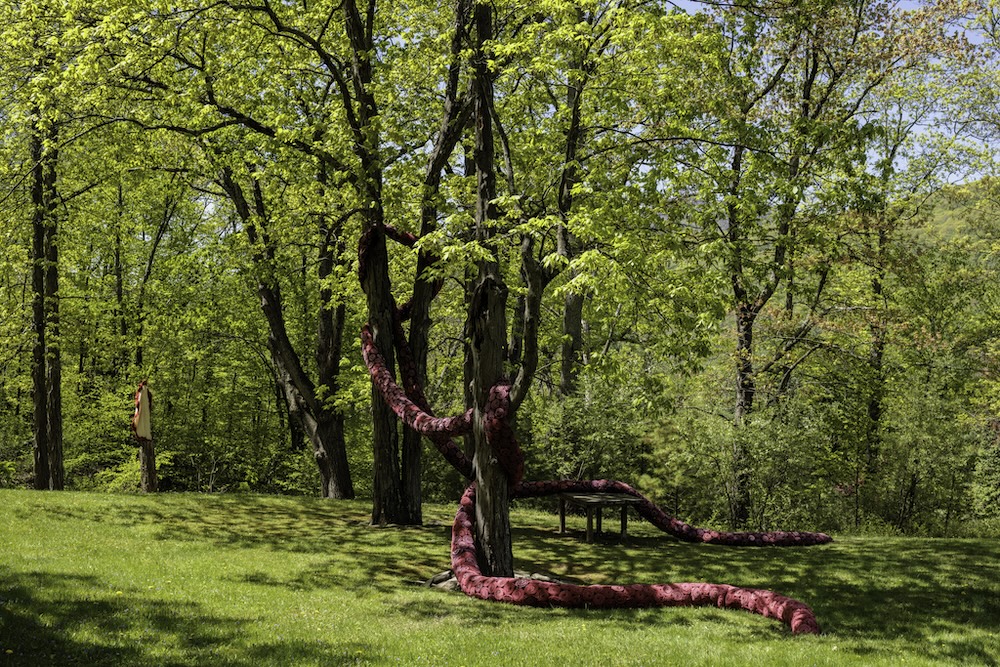
Can you share how your mother’s sari collection inspired you?
My experience with pleated and folded cloth has had a strong influence on my work. The paper models that I recreate in fabric help unlock how gravity affects the folded surface of the work when it breaks open. As I write this, I am thinking about my mother’s saris and my father’s veshtis that they wore at home. Wearing these garments requires literacy in pleating and folding cloth. I remember my grandmother washing her nine-yard sari in our apartment in Madras, India. She would fold the cloth precisely, throw it over a high clothesline with a long stick, and use the tool to methodically unfold it out to dry. I bring all of this hand-work into my artwork.
Tell me about a recent residency.
People always want to touch the work and are never quite sure if that’s allowed. At Art Omi, I created Passage Along the Edge of the Earth in 2022, offering an invitation to be physically touched by the work by walking through it. The work is a large hanging wool tent that opens like a soft book. Each side is marked with archway forms in brown or indigo blue. A long slit runs down these suggested doorways. At about 11 feet high and 12 feet wide, the structure engulfs the viewer.
I’ve been thinking about the relationship between architecture and the body. Specifically, I am thinking about domed structures found in sacred architecture across Asia, where the custom is to walk in circles around the dome in prayer. The effect of this circumambulation creates a kind of internal movement that points to the power of architecture. At the end of Art Omi open studios, I saw dusty footprints form a circle on the floor between the two doorways in the tent. So, in my eyes, the work succeeded.
Sagarika Sundaram has a solo show opening in February, 2025 in Delhi, and you can find her work at The Armory and Frieze London art fairs this fall. This interview was originally published in our SUMMER 2024 Quarterly.

